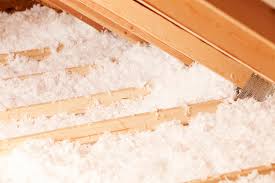Can Insulation Be Reused or Recycled? Koala Insulation Tips & Tricks

When choosing products and services for your home, it’s up to you to consider the environmental impact they leave on your space and surroundings. As a homeowner, this responsibility can become understandably overwhelming in some areas. Luckily, being environmentally friendly is easier than installing solar panels and unplugging electronics to reduce energy costs. Your solution to an energy-efficient home is often more local than you might expect.
At Koala Insulation, our teams strive to bring quality insulation education to our friends and neighbors. As such, we’ve found that many homeowners aren’t aware that the insulation within their walls, floors, and ceilings significantly contributes to an energy-efficient environment. From recycled materials to reuse capabilities, insulation can help you save on monthly energy costs while also being a great sustainability investment.
What Recycled or Reused Insulation Saves
Using recycled and reused insulation can have a significant impact on your surroundings. Many types, such as cellulose insulation, are produced with environmentally friendly products that can not only help prolong their lifespan but also contribute to reduced waste after they’re no longer useful to your household. Thanks to a reduced deterioration rate, less insulation needs to be applied during inspections and retrofit jobs. Since less material is used, fewer materials need to be produced; this helps contribute to both less waste as well as less energy used to create new insulation.
Having recycled material in the insulation production process is not just useful for the environment but is also cost-effective for the homeowner. On top of already using less material, more environmentally-friendly insulation is used to help reduce energy costs throughout the year. It’s important to note that a skilled industry professional should be consulted in reusing and recycling material, as any leftover deteriorated or damaged material can leave you with an unsolved problem rather than an efficient fix.
Reusing Cellulose
Cellulose insulation is a great product for those homeowners that want an environmentally conscious product and installation. This type of insulation is made up of 80% recycled material with a majority coming from recycled newspaper. Cellulose insulation is also treated with a flame retardant chemical, boric acid, making it a safe product to use in your home despite being produced with a significant amount of paper.
If the material hasn’t been damaged by pests or water then it makes a great product to touch up the insulation in your home. As stated previously, it is important to have a trained professional remove and install this insulation so that there isn’t any useless material left behind. While some experienced homeowners can turn some insulation projects into DIY projects, carefully removing deteriorated material while leaving behind useful insulation can get complicated for a less experienced individual.
Reusing Fiberglass
While fiberglass isn’t made primarily of recycled material like cellulose is, it still has the ability to be reused as long as it hasn’t been previously damaged. If your fiberglass insulation has water damage it can lead to mold and bacteria growth if not handled properly. A common mistake unprofessional installers make is to pack down blown-in fiberglass – this can not only reduce the R-value (a material’s resistance to heat transfer), but it also hides damage and deterioration.
Fiberglass batts, on the other hand, can be considered easier to inspect and switch out. These can be replaced and reused if they still have a useful R-value, which retains its temperature regulation abilities. However, it’s important to note that just because batts can be peeled apart and replaced, this doesn’t necessarily mean new insulation should be installed directly over it. Consult your local insulation expert if you’re looking to replace parts of your fiberglass batts.
Recycling Insulation
While insulation can be considered a recycled material in many parts of the United States, it is not the same as recycling cardboard and aluminum cans. For example, there are only a few counties in the U.S. that accept fiberglass batts and blown-in material as recyclable products. While you can check with your local recycling company for a list of materials the facility will allow, you may have to go through specified means to properly recycle used insulation. Other materials like cellulose generally can’t be recycled due to the chemicals added to make it flame retardant.
When considering recycling options for insulation, it’s best to consult your local insulation company to determine an effective course of action. While recycling insulation as a homeowner can differ drastically between cities, regions, and even zoning areas, your local experts have the necessary information to properly and safely dispose of the material removed from your home. If you’re interested in learning more about Koala Insulation’s disposal processes and capabilities, contact your local team for additional information.
Schedule a Free Evaluation
As a homeowner, it’s important to consider your environmental footprint when maintaining and renovating your home. Unfortunately, considering environmentally friendly products, energy cost reduction, and material waste can start to feel overwhelming for some projects. Insulation has many recycling capabilities all the way from initial production to removal and reuse. Koala Insulation focuses on finding you the best energy-efficient material without breaking the budget. Our industry experts are dedicated to bringing you cost-effective options to increase your comfort and safety without neglecting your environmental footprint. Many insulation materials are made from recycled material and contractors are taking up environmentally friendly waste practices. While your local area’s codes and regulations will affect what materials are considered safe to recycle, your Koala Insulation team has practices in place to reduce waste and landfill products.
Find Your Location


Get a quote


